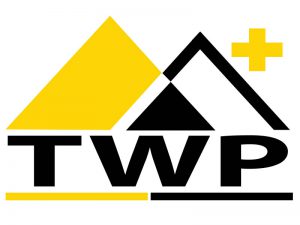Sharpe Ratio vs Treynor Ratio: What’s the Difference?
The weighted beta value of a stock is the product of its proportion in the portfolio and its beta value. For information pertaining to the registration status of 11 Financial, please contact the state securities regulators for those states in which 11 Financial maintains a registration filing. A copy of 11 Financial’s current written disclosure statement discussing 11 Financial’s business operations, services, and fees is available at the SEC’s investment adviser public information website – from 11 Financial upon written request. The fund’s beta would likely be understated relative to this benchmark since large-cap stocks tend to be less volatile in general than small caps.
How confident are you in your long term financial plan?
Rather than measuring a portfolio’s return only against the rate of return for a risk-free investment, the Treynor ratio looks to examine how well a portfolio outperforms the equity market as a whole. It does this by substituting beta for standard deviation in the Sharpe ratio equation, with beta defined as the rate of return due to overall market performance. The Sharpe ratio adjusts portfolio returns using the portfolio’s standard deviation, while the Treynor ratio adjusts portfolio returns for systematic risk. Another portfolio evaluation measure, Jensen’s alpha (𝞪), is a risk-adjusted performance measure that measures the average return on an investment or portfolio based on its beta and the market’s average return, calculated as follows. TR and SR provide similar performance rankings in fully diversified portfolios where total and systematic risks align. However, their differences emerge due to variations in portfolio diversification levels.
There are several performance metrics available to investors, each with its unique focus and approach. When comparing similar investments, the higher Treynor ratio is better, all else equal, but there is no definition of how much better it is than the other investments. Pete Rathburn is a copy editor and fact-checker with expertise in economics and personal finance and over twenty years of experience in the classroom. Our writing and editorial staff are a team of experts holding advanced financial designations and have written for most major financial media publications. Our work has been directly cited by organizations including MarketWatch, Bloomberg, Axios, TechCrunch, Forbes, NerdWallet, GreenBiz, Reuters, and many others. Our goal is to deliver the most understandable and comprehensive explanations of climate and finance topics.
Treynor ratio Vs. other ratios
- It does this by substituting beta for standard deviation in the Sharpe ratio equation, with beta defined as the rate of return due to overall market performance.
- The CAPM is a model that determines an asset’s theoretically suitable minimum rate of return, helping investors make decisions regarding the addition of assets to a well-diversified portfolio.
- This suggests that the investment is providing a better risk-adjusted return.
- First developed in 1966 and revised in 1994, the Sharpe ratio aims to reveal how well an asset performs compared to a risk-free investment.
- 11 Financial’s website is limited to the dissemination of general information pertaining to its advisory services, together with access to additional investment-related information, publications, and links.
In essence, the Treynor ratio is a risk-adjusted measurement of return based on systematic risk. It indicates how much return an investment, such as a portfolio of stocks, a mutual fund, or exchange-traded fund, earned for the amount of risk the investment assumed. A higher ratio signifies that the investment or portfolio is generating more return per unit of systematic risk (as measured by beta). This suggests that the investment is providing a better risk-adjusted return.
The Treynor Ratio has various applications in portfolio management, fund evaluation and selection, and risk-adjusted performance comparisons. Working with a wealth management professional who understands how to interpret and apply this metric can help investors make better-informed decisions and achieve their long-term financial goals. The Treynor Ratio can be compared and contrasted with metrics such as the Sharpe Ratio, Jensen’s Alpha, and Sortino Ratio to provide a more holistic understanding of an investment’s performance. Some researchers have proposed incorporating alternative risk measures into the Treynor Ratio, such as Value-at-Risk (VaR) or Conditional Value-at-Risk (CVaR), to better capture the risk characteristics of certain investment portfolios. The Treynor Ratio’s results can be sensitive to the input assumptions used in its calculation, such as the risk-free rate and portfolio beta. As mentioned earlier, the Treynor Ratio assumes that unsystematic risk has been eliminated through diversification.
The Treynor, Sharpe, and Jensen ratios combine risk and return performance into a single value to measure portfolio performance. Historically, many investors mistakenly based the success of their portfolios on returns alone. Generally speaking, the higher the Treynor ratio, the better the investment’s performance. In the example, it is clear that the equity portfolio is performing more favorably than the fixed income portfolio, whose Treynor ratio is only 0.03. However, it is important to note that since the ratio is based on past performance, it may no longer be duplicated in the future.
You decide to use the Treynor Ratio to help you select the best portfolio investment. Our Contrarian trading strategy team of reviewers are established professionals with years of experience in areas of personal finance and climate. Carbon Collective partners with financial and climate experts to ensure the accuracy of our content. The articles and research support materials available on this site are educational and are not intended to be investment or tax advice. All such information is provided solely for convenience purposes only and all users thereof should be guided accordingly.
Go a level deeper with us and investigate the potential impacts of climate change on investments like your retirement account. As seen in its formula, calculating the Treynor Ratio requires knowing the Rf, Rp, and β. Since they’re required for calculating the ratio, it might be necessary to calculate these first. Our mission is to empower readers with the most factual and reliable financial information possible to help them make informed decisions for their individual needs. At Finance Strategists, we partner with financial experts to ensure the accuracy of our financial content.
Manager E did best because although Manager F had the same annual return, it was expected that Manager E would yield a lower return because the portfolio’s beta was significantly lower than that of portfolio F. J.B. Maverick is an active trader, commodity futures broker, and stock market analyst 17+ years of experience, in addition to 10+ years of experience as a finance writer and book editor. As a financial analyst, it is important to not rely on a single ratio for why the swiss franc is so strong your investment decisions.
It implies that the portfolio has generated higher returns relative to its systematic risk, which is a desirable characteristic for investors. The Sharpe ratio is almost identical to the Treynor measure, except that the risk measure is the standard deviation of the portfolio instead of considering only the systematic risk as represented by beta. Conceived by Bill Sharpe, this measure closely follows his work on the capital asset pricing model (CAPM) and, by extension, uses total risk to compare portfolios to the capital market line.
While Treynor ratio uses Beta which is a portfolio return volatility relative to market’s (systematic risk), Sharpe ratio uses the actual portfolio return volatility (total risk). The difference between the two metrics is that the Treynor ratio utilizes beta, or market risk, to measure volatility instead of using total risk (standard deviation) like the Sharpe ratio. It measures the efficiency with which the portfolio manager utilizes the fund’s assets to generate returns in relation to the level of systematic risk. It’s a risk-adjusted measure of portfolio beta relative to market index proxy. The Treynor Ratio is a metric that determines how much excess return a portfolio has generated for every unit of risk it has taken. In this sense, excess returns refer to returns that exceed those earned by risk-free investments.
Treynor-Black Model
This is represented by the numerator of the equation which is the portfolio return minus by risk-free rate. Portfolio return is the portfolio actual return over the given period of time. While the risk-free rate is the rate of the return of a risk-free asset which is usually assumed to be the treasury bond of the same currency. From the formula below, you can see that the ratio is concerned with both the return of the portfolio and its systematic risk. From a purely mathematical perspective, the formula represents the amount of excess return from the risk-free rate per unit of systematic risk. The Treynor ratio is a performance indicator that measures the amount of return that a portfolio generates with every unit of risk.
The Equity Portfolio’s total return is 7%, and the Fixed Income Portfolio’s total return is 5%. As a proxy for the risk-free rate, we use the return on U.S Treasury Bills – 2%. Assume that the Beta of the Equity Portfolio is 1.25, and the Fixed Income Portfolio’s Beta is 0.7. From the following information, we compute the Treynor Ratio of each portfolio.
Beta (β) is a financial metric measuring the volatility of the asset or portfolio return compared to its benchmark. The limitations of the Treynor ratio include its historical nature (investments are not likely to do in the future as they did in the past), and its accuracy mainly depends on using the right benchmarks for beta measurement. A portfolio’s beta measures its sensitivity to market movements compared to a benchmark. Diversified portfolios typically aim for a beta close to that of a chosen benchmark, such as the S&P 500.
The Jensen measure requires the use of a different risk-free exchange rate euro to polish zloty rate of return for each time interval. The Treynor Ratio compares portfolio managers based on the excess return per unit of systematic risk. A higher ratio suggests better risk-adjusted performance but should be interpreted alongside other measures for a comprehensive assessment. The Modified Treynor Ratio adjusts the traditional Treynor Ratio formula to account for the fact that some portfolios may have higher unsystematic risk than others. This enhancement can provide a more accurate assessment of the risk-adjusted return for non-diversified portfolios.

